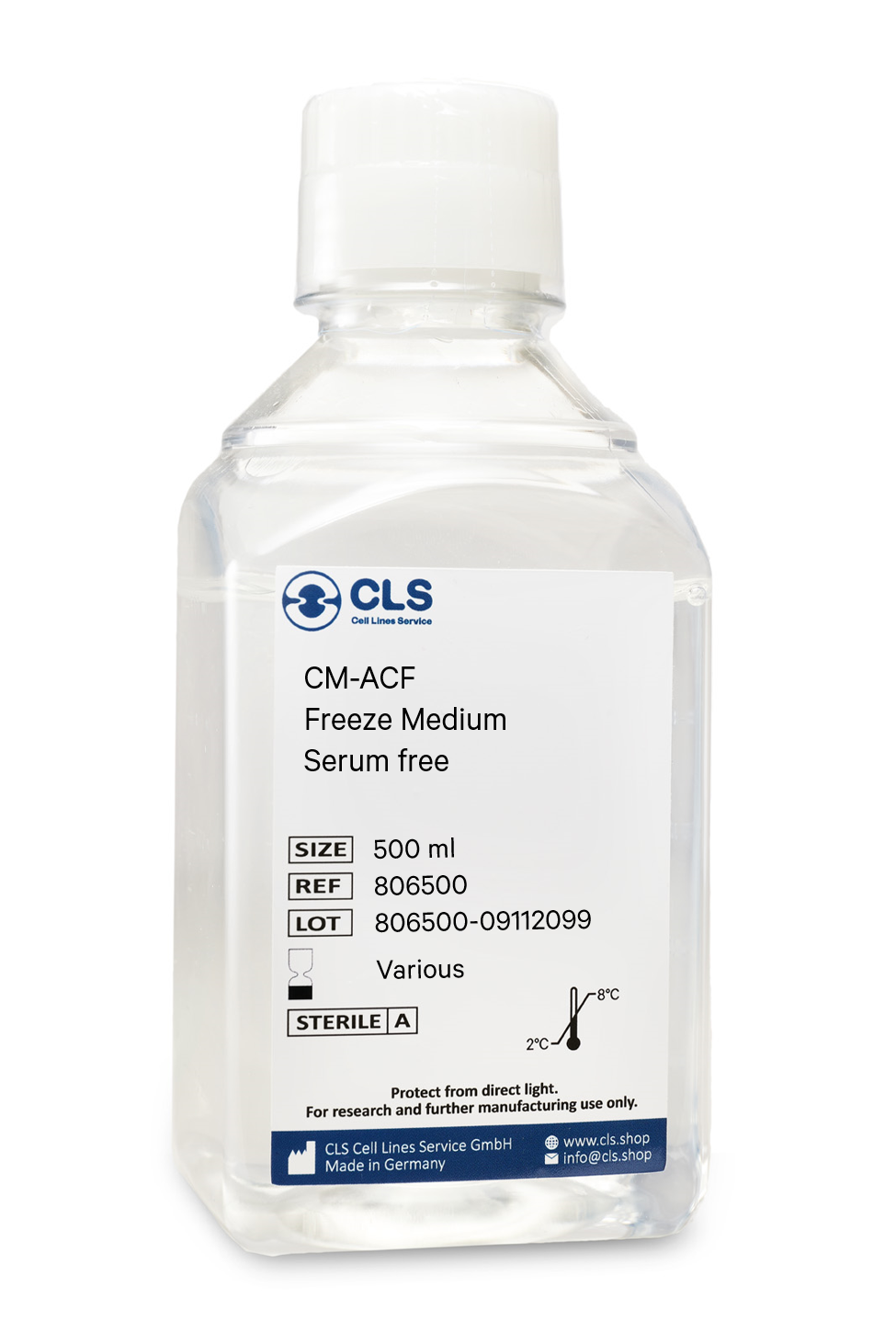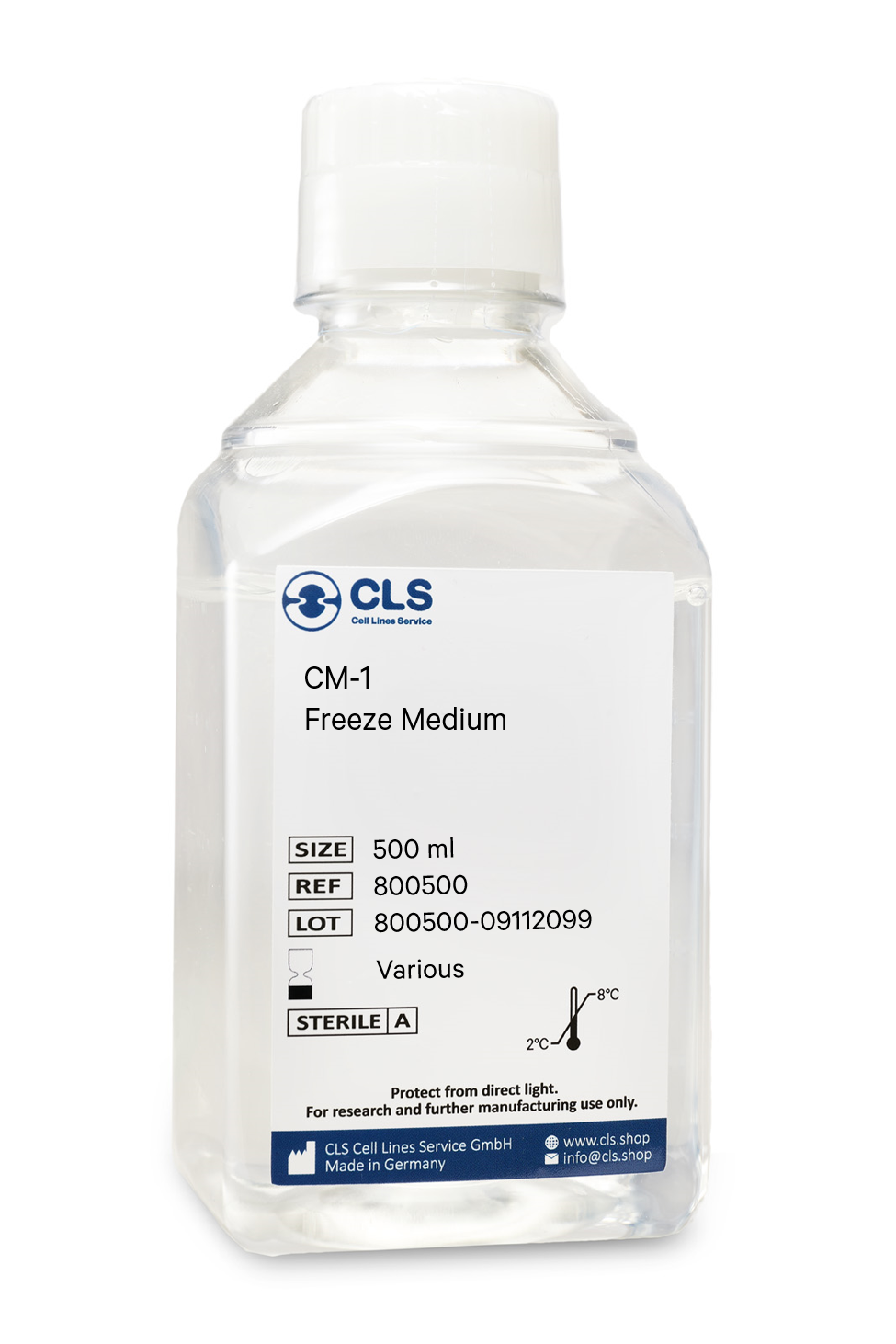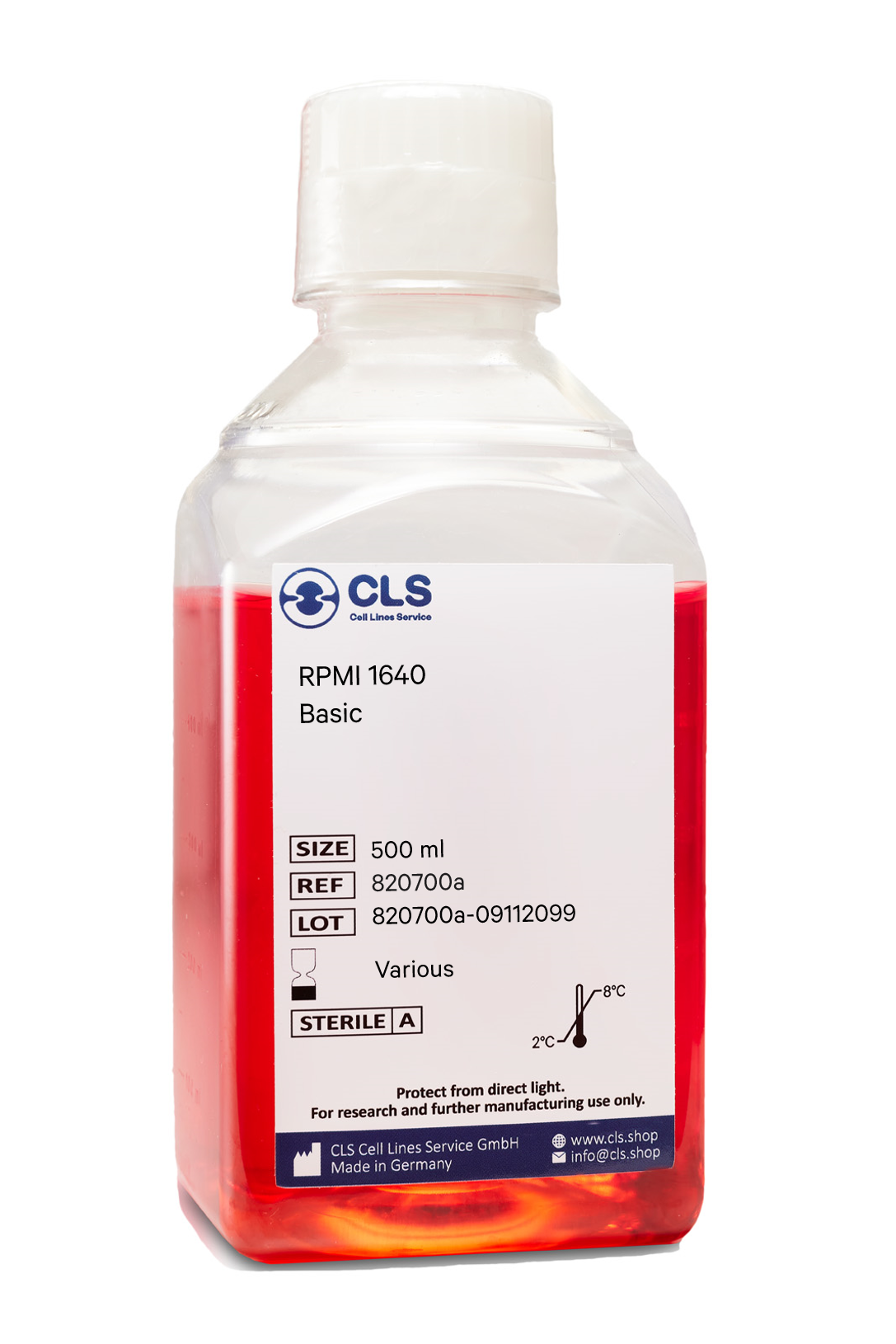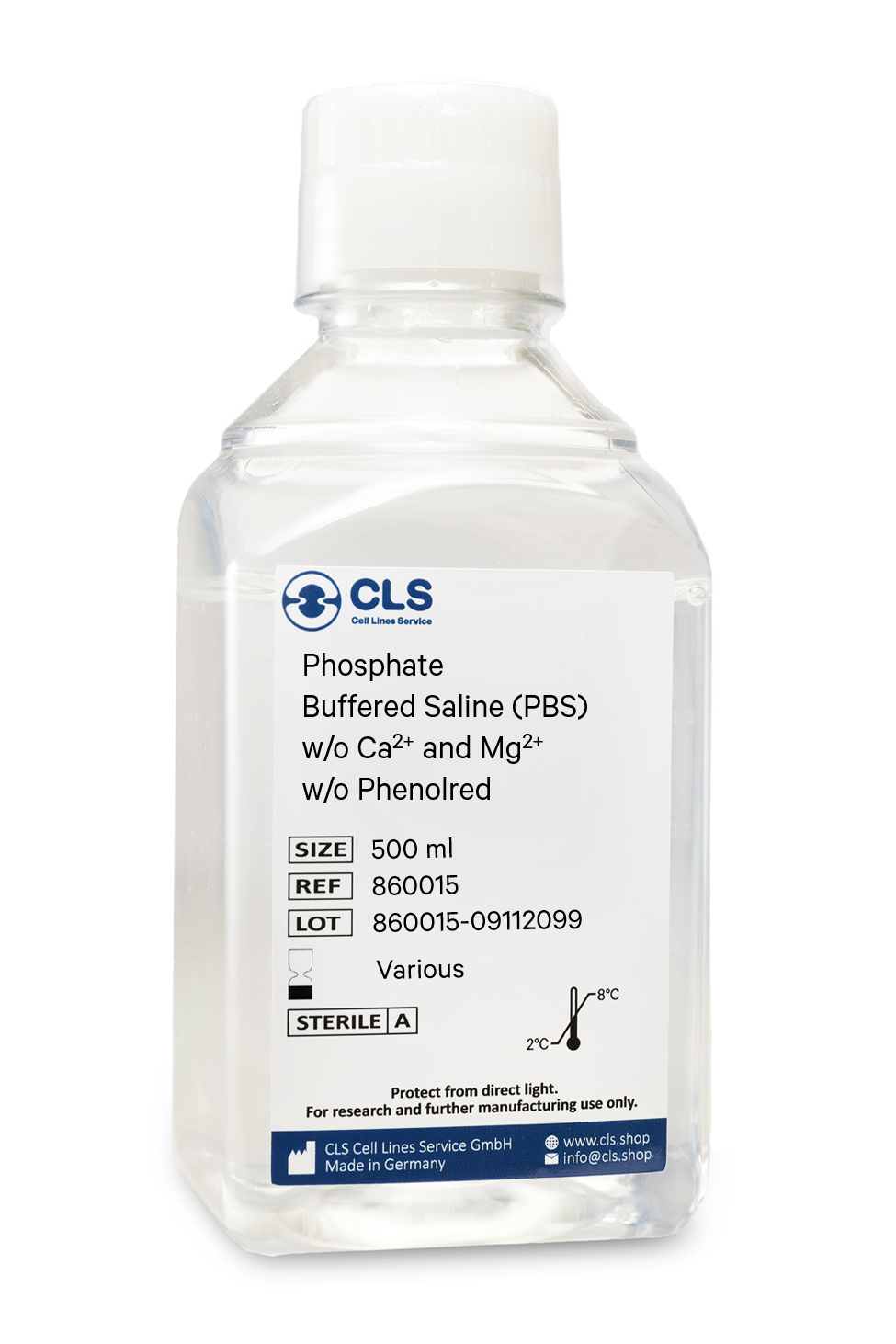SKW-3 Cells
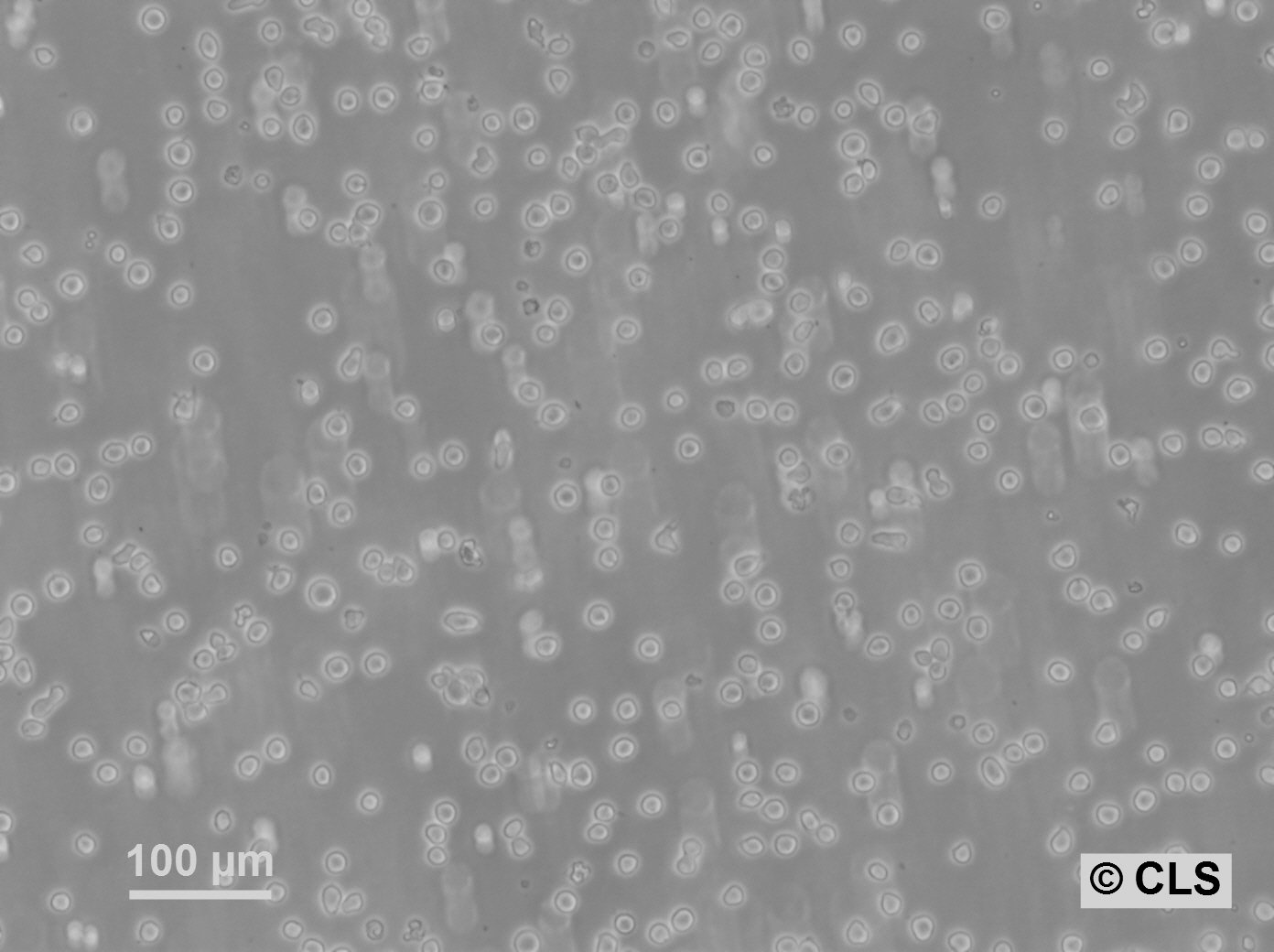
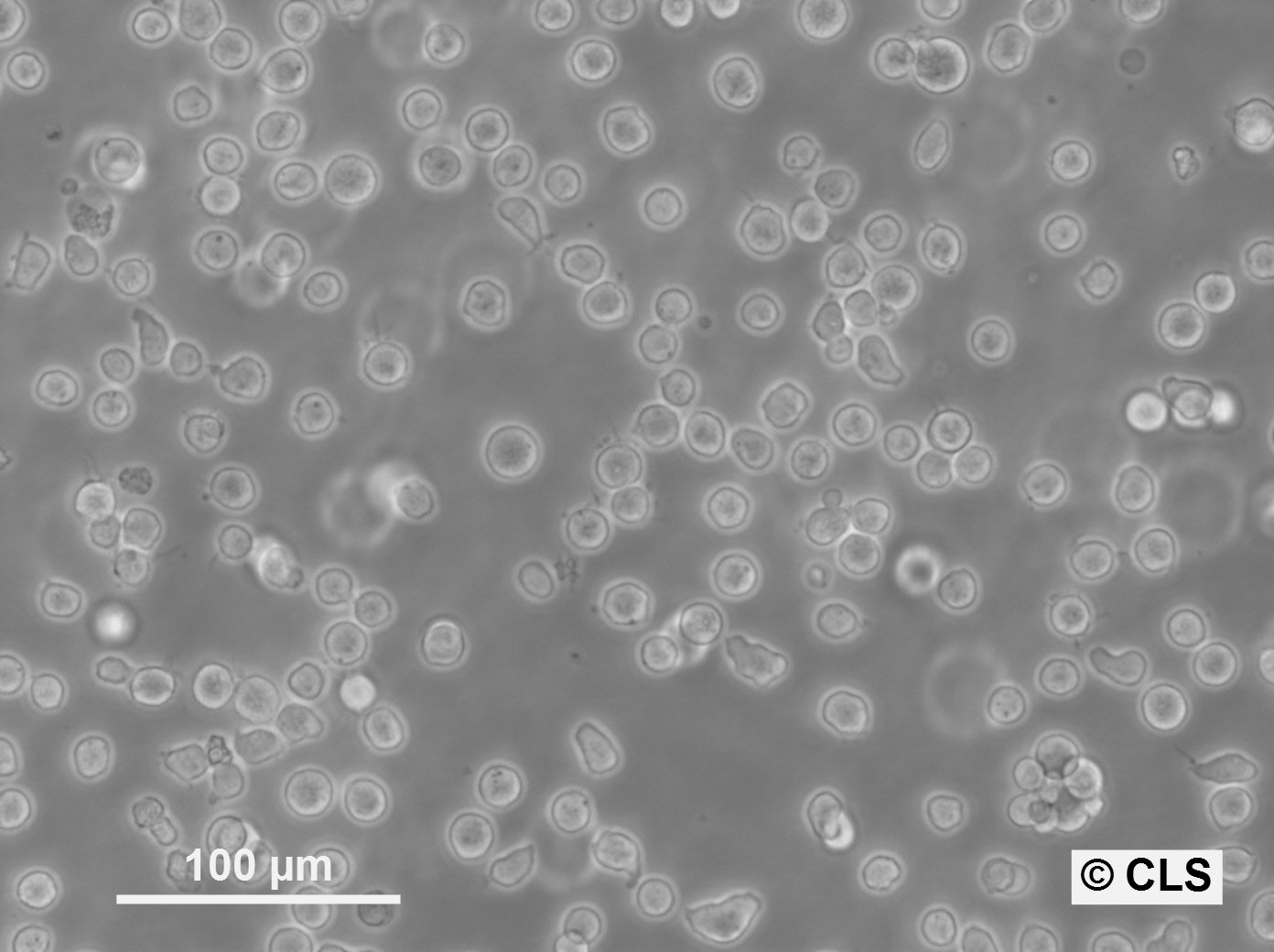






General information
| Description | The SKW-3 cell line was thought to originate from the blood of a 61-year-old male patient with chronic lymphocytic leukemia (CLL). However, STR authentication has revealed that this cell line is contaminated and therefore is considered a derivate of KE-37 cells. |
|---|---|
| Organism | Human |
| Tissue | Hematopoietic |
| Disease | T cell leukemia (CLL) |
| Synonyms | SKW3 |
Characteristics
| Age | 27 years |
|---|---|
| Gender | Male |
| Ethnicity | Caucasian |
| Morphology | Round cells |
| Cell type | T Lymphocyte |
| Growth properties | Suspension |
Identifiers / Biosafety / Citation
| Citation | SKW-3 (Cytion catalog number 300343) |
|---|---|
| Biosafety level | 1 |
Expression / Mutation
| Antigen expression | CD2+, CD3-, CD4+, CD8, Thy-1-like antigen |
|---|---|
| Products | LECT2 (chemotactic protein) |
Handling
| Culture Medium | RPMI 1640, w: 2.1 mM stable Glutamine, w: 2.0 g/L NaHCO3 (Cytion article number 820700a) |
|---|---|
| Medium supplements | Supplement the medium with 10% FBS |
| Doubling time | 30 hours |
| Subculturing | Maintain cultures by periodically adding or replacing the medium. Initiate cultures with a density of 2 x 10^5 cells/ml and keep the cell concentration within the range of 1 x 10^5 to 1 x 10^6 cells/ml for optimal growth. |
| Freezing recovery | 1 x 10^5/ml |
| Freeze medium | CM-1 (Cytion catalog number 800100) or CM-ACF (Cytion catalog number 806100) |
| Handling of cryopreserved cultures |
|
Quality control / Genetic profile / HLA
| Sterility | Mycoplasma contamination is excluded using both PCR-based assays and luminescence-based mycoplasma detection methods. To ensure there is no bacterial, fungal, or yeast contamination, cell cultures are subjected to daily visual inspections. |
|---|---|
| STR profile |
CSF1PO: 10,12
D13S317: 8,12
D16S539: 11,12
D5S818: 12,13
D7S820: 8,12
TH01: 6,9.3
TPOX: 8
vWA: 17,18
D3S1358: 15,18
D21S11: 28,29,39
D18S51: 13,18
Penta E: 5,14
Penta D: 11,15
D8S1179: 11,14
FGA: 24,25
D1S1656: 15.3,16
D6S1043: 18,21
D2S1338: 19,25
D12S391: 19,22
D19S433: 13,15
|
| HLA alleles |
A*: 11:01:01, 30:01:01
B*: 35:01:01, 44:02:01
C*: 04:01:01, 05:01:01
DRB1*: 01:03:01, 04:01:01
DQA1*: 01:01:01, 03:03:01
DQB1*: 03:01, 05:01
DPB1*: 04:01:01, 04:02:01
E: 01:01:01
|
Required products
In biological research, the cryopreservation of mammalian cells is an invaluable tool. Successful preservation of cells is a top priority given that losing a cell line to contamination or improper storage conditions leads to lost time and money, ultimately delaying research results. Once the cells have been transferred from a cell growth medium to a freezing medium, the cells are typically frozen at a regulated rate and stored in liquid nitrogen vapor or at below -130°C in a mechanical deep freezer. The freeze medium CM-ACF enables cryopreservation of cells at below -130°C (or in liquid nitrogen), essentially eliminating the need for an additional, costly ultralow freezer and eliminating time-consuming and demanding controlled rate freezing processes. Simply collect the cells, aspirate the growth medium, resuspend in CM-ACF, transfer to a cryovial, and store the vial at below -130 °C.
Long shelf-life
CM-ACF is a serum-free, ready-to-use cryopreservation medium that can be stored in the refrigerator for up to one year.
Trusted by hundreds of researchers
Our advanced, serum-free cell freezing medium CM-ACF is a market-leading product in Germany and Europe and is distinguished by numerous publications involving hundreds of different cell lines worldwide. We tested it with more than 1000 cell lines from our proprietary cell bank.
Optimized serum-free ingredients
CM-ACF does not contain serum products. Serum-containing cryopreservation mediums have the disadvantage of fluctuating recovery rates and unclear composition. Since the composition and concentration of proteins and other biological components vary from batch to batch in serum, the reproducibility of experiments with cells that were frozen in a serum-containing medium may be compromised. As each component of CM-ACF is carefully defined, you can rest assured that cells always recover identically.
Contains DMSO, glucose, salts
Buffering capacity pH = 7.2 to 7.6
Universal
- even for stem cell preservation
All common cell lines can be frozen and thawed to yield many viable cells. Compared to standard media, the rate of recovery of even the most delicate cells is significantly higher. Using CM-ACF, we store over 1000 different cell lines with outstanding success.
Applications & Validation
The cells preserved in our CM-ACF freeze medium can be used for cell counting, viability and cryopreservation, cell culture, mammalian cell culture, gene expression analysis and genotyping, in vitro transcription, and polymerase chain reactions. Each batch's efficacy is evaluated using CHO-K1 cells. Each batch is tested for pH, osmolality, sterility, and endotoxins to ensure high quality.
In biological research, the cryopreservation of mammalian cells is an invaluable tool. Successful preservation of cells is a top priority given that losing a cell line to contamination or improper storage conditions leads to lost time and money, ultimately delaying research results. Once the cells have been transferred from a cell growth medium to a freezing medium, the cells are typically frozen at a regulated rate and stored in liquid nitrogen vapor or at below -130°C in a mechanical deep freezer. The freeze medium CM-1 enables cryopreservation of cells at below -130°C (or in liquid nitrogen), essentially eliminating the need for an additional, costly ultralow freezer and eliminating time-consuming and demanding controlled rate freezing processes. Simply collect the cells, aspirate the growth medium, resuspend in CM-1, transfer to a cryovial, and store the vial at below -130 °C.
Long shelf-life
CM-1 is a serum-containing, ready-to-use cryopreservation medium that can be stored in the refrigerator for up to one year.
Trusted by hundreds of researchers
Our advanced cell freezing medium CM-1 is a market-leading product in Germany and Europe and is distinguished by numerous publications involving hundreds of different cell lines worldwide. We tested it with more than 1000 cell lines from our proprietary cell bank.
Optimized ingredients
CM-1 does contain serum products. Serum-containing cryopreservation mediums optimally protect the cells whilst being frozen and have the advantage of high recovery rates. As CM-1 has been tested with a multitude of cell lines, you can rest assured that your cells always recover well.
Contains FBS, DMSO, glucose, salts
Buffering capacity pH = 7.2 to 7.6
Applications & Validation
The cells preserved in our CM-1 freeze medium can be used for cell counting, viability and cryopreservation, cell culture, mammalian cell culture, gene expression analysis and genotyping, in vitro transcription, and polymerase chain reactions. Each batch's efficacy is evaluated using CHO-K1 cells. Each batch is tested for pH, osmolality, sterility, and endotoxins to ensure high quality.
Initially designed to support the growth of human leukemic cells in both suspension and monolayer cultures, RPMI 1640 Medium has evolved through modifications by researchers and commercial suppliers to become suitable for a diverse range of mammalian cells. It is exceptionally compatible with cell lines such as HeLa, Jurkat, MCF-7, PC12, PBMC, astrocytes, and carcinomas.
RPMI 1640 Medium stands apart from other cell culture media due to its unique composition. It contains a substantial amount of phosphate, amino acids, and vitamins. Notably, it encompasses biotin, vitamin B12, and PABA, absent in Eagle's Minimal Essential Medium or Dulbecco's Modified Eagle Medium. Moreover, RPMI 1640 Medium exhibits significantly elevated concentrations of vitamins inositol and choline. However, it does not contain proteins, lipids, or growth factors. Consequently, supplementation with 10% Fetal Bovine Serum (FBS) is commonly required to provide optimal conditions for cell growth.
The buffering system of RPMI 1640 Medium relies on sodium bicarbonate (2.0 g/L) and necessitates a 5-10% CO2 environment to maintain a physiologically appropriate pH. The inclusion of the reducing agent glutathione further distinguishes this medium from others.
This RPMI 1640 medium contains 4.5 grams per liter of glucose.
Quality control
pH = 7.2 +/
- 0.02 at 20-25°C.
Each lot has been tested for sterility and absence of mycoplasma and bacteria.
Maintenance
Keep refrigerated at +2°C to +8°C in the dark. Freezing and warming up to +37° C minimize the quality of the product.
Do not heat the medium to more than 37° C or use uncontrollable sources of heat (e.g., microwave appliances).
If only a part of the medium is to be used, remove this amount from the bottle and warm it up at room temperature.
Shelf life for any medium except for the basic medium is 8 weeks from the date of manufacture.
Composition
Components
mg/L
Inorganic Salts
Calcium nitrate x 4H2O
100,00
Magnesium sulfate anhydrous
48,83
Potassium chloride
400,00
Sodium chloride
5450,00
di-Sodium hydrogen phosphate
800,49
Other Components
D(+)-Glucose anhydrous
4500,00
Glutathione (red.)
1,00
HEPES
2383,00
Phenol red
5,00
Sodium pyruvate
110,00
Amino Acids
L-Arginine x HCl
241,86
L-Asparagine x H2O
56,82
L-Aspartic acid
20,00
L-Cystine x 2HCl
65,19
L-Glutamine
300,00
L-Glutamic acid
20,00
Glycine
10,00
L-Histidine x HCl x H2O
20,27
L-Hydroxyproline
20,00
L-Isoleucine
50,00
L-Leucine
50,00
L-Lysine x HCl
40,00
L-Methionine
15,00
L-Phenylalanine
15,00
L-Proline
20,00
L-Serine
30,00
L-Threonine
20,00
L-Tryptophan
5,00
L-Tyrosine x 2Na
28,83
L-Valine
20,00
Vitamins
p-Aminobenzoic acid
1,00
D-(+)-Biotin
0,20
D-Calcium pantothenate
0,25
Choline chloride
3,00
Folic acid
1,00
myo-Inositol
35,00
Nicotinamide
1,00
Pyridoxine x HCl
1,00
Riboflavin
0,20
Thiamine x HCl
1,00
Vitamin B12
0,01
NaHCO3
1500,00
Initially designed to support the growth of human leukemic cells in both suspension and monolayer cultures, RPMI 1640 Medium has evolved through modifications by researchers and commercial suppliers to become suitable for a diverse range of mammalian cells. It is exceptionally compatible with cell lines such as HeLa, Jurkat, MCF-7, PC12, PBMC, astrocytes, and carcinomas.
RPMI 1640 Medium stands apart from other cell culture media due to its unique composition. It contains a substantial amount of phosphate, amino acids, and vitamins. Notably, it encompasses biotin, vitamin B12, and PABA, absent in Eagle's Minimal Essential Medium or Dulbecco's Modified Eagle Medium. Moreover, RPMI 1640 Medium exhibits significantly elevated concentrations of vitamins inositol and choline. However, it does not contain proteins, lipids, or growth factors. Consequently, supplementation with 10% Fetal Bovine Serum (FBS) is commonly required to provide optimal conditions for cell growth.
The buffering system of RPMI 1640 Medium relies on sodium bicarbonate (2.0 g/L) and necessitates a 5-10% CO2 environment to maintain a physiologically appropriate pH. The inclusion of the reducing agent glutathione further distinguishes this medium from others.
The unique composition of this RPMI formulation comprises 2.1 mM of stable Glutamine, 2.0 grams per liter of NaHCO3, and phenol red.
Quality control
pH = 7.2 +/
- 0.02 at 20-25°C.
Each lot has been tested for sterility and absence of mycoplasma and bacteria.
Maintenance
Keep refrigerated at +2°C to +8°C in the dark. Freezing and warming up to +37° C minimize the quality of the product.
Do not heat the medium to more than 37° C or use uncontrollable sources of heat (e.g., microwave appliances).
If only a part of the medium is to be used, remove this amount from the bottle and warm it up at room temperature.
Shelf life for any medium except for the basic medium is 8 weeks from the date of manufacture.
Composition
Components
mg/L
Inorganic Salts
Calcium nitrate x 4H2O
100,00
Magnesium sulfate anhydrous
48,83
Potassium chloride
400,00
Sodium chloride
5,950.00
di-Sodium hydrogen phosphate
800,49
Other Components
D(+)-Glucose anhydrous
2,000.00
Glutathione (red.)
1,00
Phenol red
5,00
NaHCO3
2,000.00
Amino Acids
L-Arginine x HCl
241,86
L-Asparagine x H2O
56,82
L-Aspartic acid
20,00
L-Cystine x 2HCl
65,19
L-Alanyl-L-Glutamine
447,00
L-Glutamic acid
20,00
Glycine
10,00
L-Histidine x HCl x H2O
20,27
L-Hydroxyproline
20,00
L-Isoleucine
50,00
L-Leucine
50,00
L-Lysine x HCl
40,00
L-Methionine
15,00
L-Phenylalanine
15,00
L-Proline
20,00
L-Serine
30,00
L-Threonine
20,00
L-Tryptophan
5,00
L-Tyrosine x 2Na
28,83
L-Valine
20,00
Vitamins
p-Aminobenzoic acid
1,00
D-(+)-Biotin
0,20
D-Calcium pantothenate
0,25
Choline chloride
3,00
Folic acid
1,00
myo-Inositol
35,00
Nicotinamide
1,00
Pyridoxine x HCl
1,00
Riboflavin
0,20
Thiamine x HCl
1,00
Vitamin B12
0.005
Phosphate-buffered saline (PBS) is a versatile buffer solution used in many biological and chemical applications, as well as tissue processing. Our PBS solution is formulated with high-quality ingredients to ensure a constant pH during experiments. The osmolarity and ion concentrations of our PBS solution are matched to those of the human body, making it isotonic and non-toxic to most cells.
Composition of our PBS Solution
Our PBS solution is a pH-adjusted blend of ultrapure-grade phosphate buffers and saline solutions. At a 1X working concentration, it contains 137 mM NaCl, 2.7 mM KCl, 8 mM Na2HPO4, and 2 mM KH2PO4. We have chosen this composition based on CSHL protocols and Molecular cloning by Sambrook, which are well-established standards in the research community.
Applications of our PBS Solution
Our PBS solution is ideal for a wide range of applications in biological research. Its isotonic and non-toxic properties make it perfect for substance dilution and cell container rinsing. Our PBS solution with EDTA can also be used to disengage attached and clumped cells. However, it is important to note that divalent metals such as zinc cannot be added to PBS as this may result in precipitation. In such cases, Good's buffers are recommended. Moreover, our PBS solution has been shown to be an acceptable alternative to viral transport medium for the transport and storage of RNA viruses, such as SARS-CoV-2.
Storage of our PBS Solution
Our PBS solution can be stored at room temperature, making it easy to use and access.
To sum up
In summary, our PBS solution is an essential component in many biological and chemical experiments. Its isotonic and non-toxic properties make it suitable for numerous applications, from cell culture to viral transport medium. By choosing our high-quality PBS solution, researchers can optimize their experiments and ensure accurate and reliable results.
Composition
Components
mg/L
Inorganic Salts
Potassium chloride
200,00
Potassium dihydrogen phosphate
200,00
Sodium chloride
8,000.00
di-Sodium hydrogen phosphate anhydrous
1,150.00

